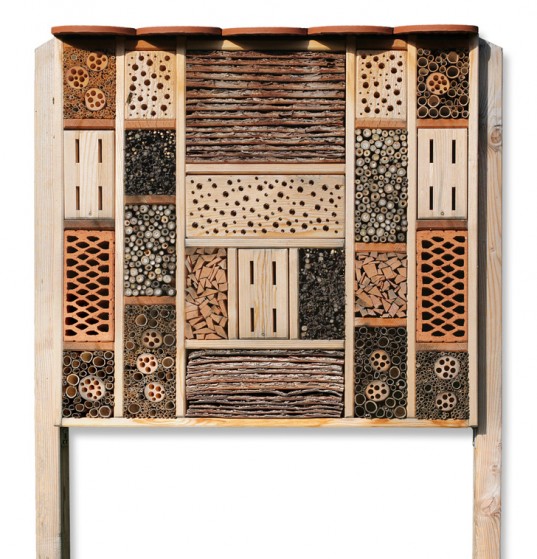How to Build an Insect Hotel
[caption id=attachment_303 align=alignnone width="537"] http://assets.inhabitat.com/wp-content/blogs.dir/1/files/2014/01/Large_insect_condo-537x559.jpg[/caption]
http://assets.inhabitat.com/wp-content/blogs.dir/1/files/2014/01/Large_insect_condo-537x559.jpg[/caption]
 http://assets.inhabitat.com/wp-content/blogs.dir/1/files/2014/01/Large_insect_condo-537x559.jpg[/caption]
http://assets.inhabitat.com/wp-content/blogs.dir/1/files/2014/01/Large_insect_condo-537x559.jpg[/caption] How to Build an Insect Hotel
Even though creepy crawlies don’t look very pretty, they are very important when it comes to your garden’s ecosystem, let alone on a wider scale. Many species of bee, wasp, ladybird, butterfly and moth hibernate over the winter, and it can be difficult for them to find safe and warm places to hide away until the weather starts to warm up again.
Providing a safe hiding place for these bugs means that you can keep a lot of wildlife in your garden, which will aid the pollination and fertilisation of your garden in the spring time. Each of these species requires a different type of home, so depending on which insects you want to attract and keep in the garden, you can decide on which materials and compartments to create.
What you’ll need:
- A wooden box or open bird box that has an overhanging lip to keep rain and snow out.
- Wooden planks of different lengths to create different sections.
- An assortment of twigs, wood chips, rolled up paper, leaves, bamboo, thin cardboard tubing, blocks of wood with holes drilled in (if desired).
- Hot glue gun with glue sticks.
- Twine or wire to hang the finished hotel.
Build your Insect Hotel
- Take the wooden box and the lengths of wooden plank that you have. Using the glue gun stick the planks inside the box to create different sized compartments. You may need to use a saw to cut the planks of wood down to the correct size.
- Fill the sections of the box with the different materials that you collected. Pack them tightly to make sure that they don’t fall out. Consider gluing the rolls of paper in place to stop them from falling out in windy weather.
- If you find that your stuffing isn't staying in place, then use the glue gun to make sure that everything is secured. You should be able to tip the insect hotel upside down and all of the materials should stay in place.
- When creating ‘bee holes’ in wood, take into consideration that different species of bee are attracted to different sized holes for shelter and egg-laying. Leaf cutter bees prefer holes which are 1/4” wide and 2 1/2-4” deep. For mason bees, drill holes which are 6” deep and 5/16” wide. Try to space holes at least 3/4” apart, and never drill entirely through the wooden block.

